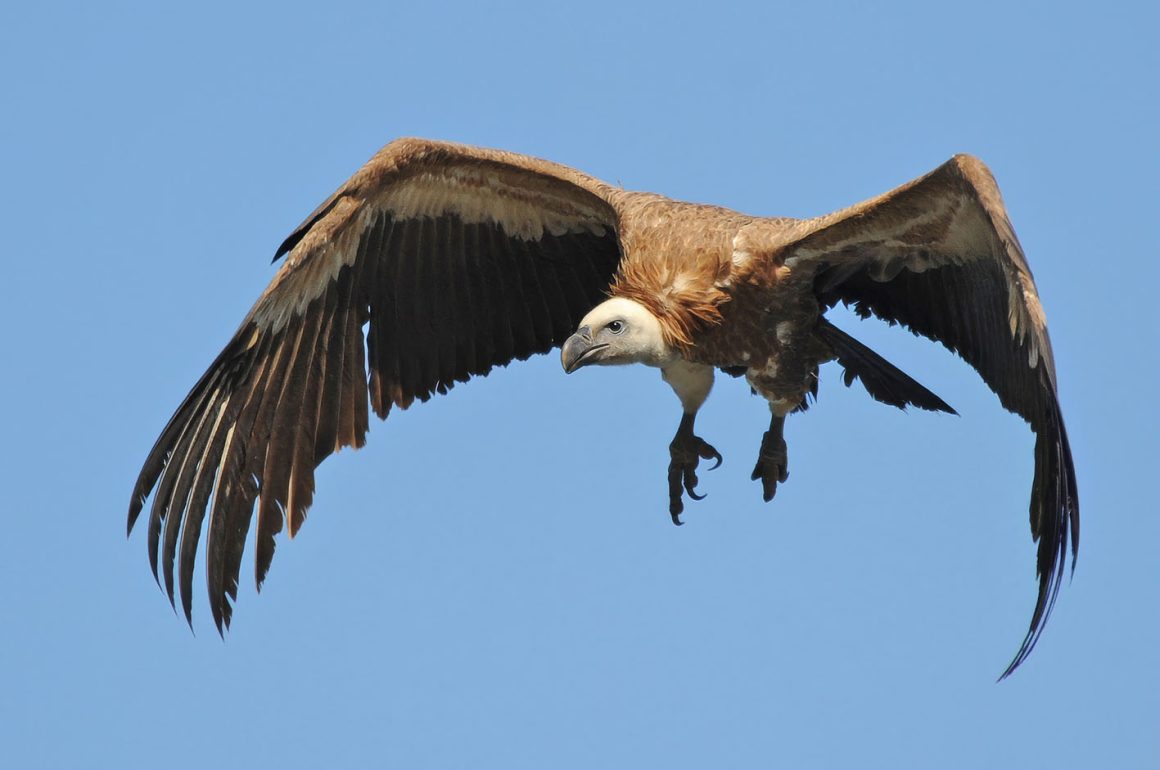
By Clive Finlayson
Growing up in Gibraltar, it is impossible not to notice large birds of prey, in the thousands, overhead. That, and his father’s influence, got Clive hooked on birds from a very young age. His passion for birds took him eventually to the Edward Grey Institute of Field Ornithology at Oxford University where he read for a DPhil, working with swifts and pallid swifts. Publishing papers, articles, and books on birds aside, Clive is also a keen bird photographer. He started as a poor student with an old Zenit camera and a 400 mm lens; nowadays he works with a Nikon mirrorless system. Although his back garden is Gibraltar and the Strait of Gibraltar, Clive has an intimate knowledge of Iberian birds but his work also takes him much further afield, from Canada to Japan to Australia. He is the Director of the Gibraltar National Museum.
As I write these lines, it is the screaming of agitated Yellow-legged Gulls Larus michehellis just outside my window that alerts me to another raptor overhead. This time it’s a group of Griffon Vultures Gyps fulvus that have just arrived from the south. The south, just 21 kilometers away, is the coast of Morocco and the Griffons have just completed a short but arduous sea-crossing across the Strait of Gibraltar. Griffon Vultures have a long breeding season. The chicks need six months to develop so the adults lay their eggs in January. So why are these Griffons arriving now? Isn’t it a bit late to breed?
A Griffon Vulture rests on a rooftop in the city of Gibraltar, having just crossed the sea from Africa
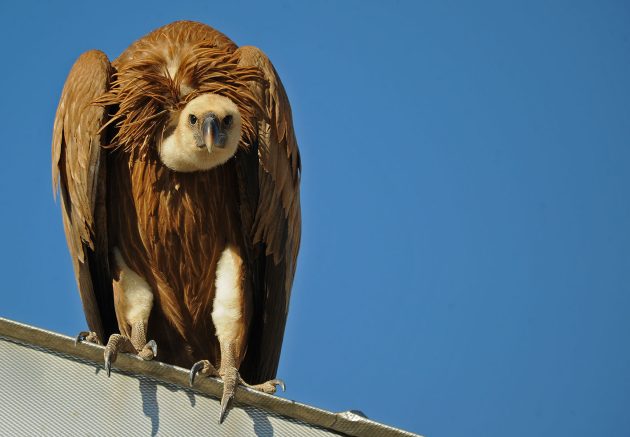
If you check these Griffons, and I have looked at and photographed thousands, not one is an adult. These are all immature birds, the young of last year or the year before, coming back. Why bother with such a risky journey if you aren’t going to breed? We can speculate that it’s part of the learning curve to adulthood or it may simply be that the non-breeding areas in Africa become inhospitable for them at this time of the year. They have to get out. It’s probably a combination of factors that makes thousands of Griffons cross the sea at Gibraltar from late April to June. The crossing is hazardous for birds not equipped for flying over water. Some just make it and land exhausted. Others are less fortunate and ditch in the sea. With luck, they might be rescued but others drown.
An exhausted, panting, Griffon Vulture sits on a sea wall at Gibraltar, with a backdrop of spring-colorful wildflowers at Gibraltar
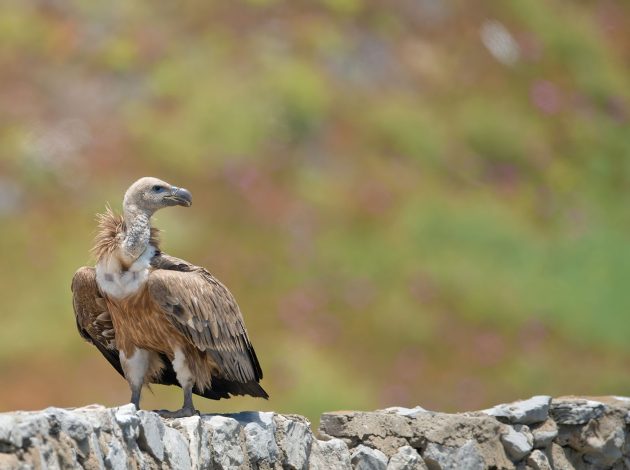
These birds have crossed the Sahara Desert to winter in the Sahel Region, some right down to Senegal in West Africa, and are now on their way back. Their numbers have gone up dramatically in recent years as a result of conservation. In Franco’s day, a price was paid to farmers and hunters who brought evidence of having shot “vermin”. These included the talons of raptors, Griffons included. All this changed with protection. In my early days, some fifty years ago, the number of Griffons that I would see in a season can today be counted in a single flock!
A Griffon Vulture ditches in the sea off Gibraltar and struggles to keep its head above the water
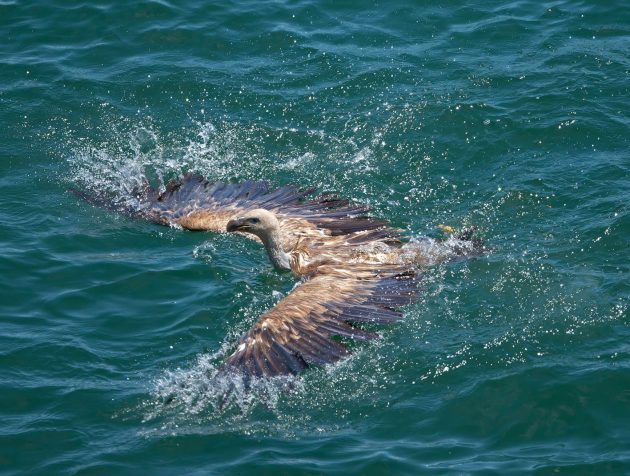
Since 2003, Ruppell’s Vultures Gyps ruepelli, have been showing up with the Griffons. These are African, sub-Saharan, vultures that were unknown in Europe until recent times.
A Ruppell’s Vulture arriving at Gibraltar
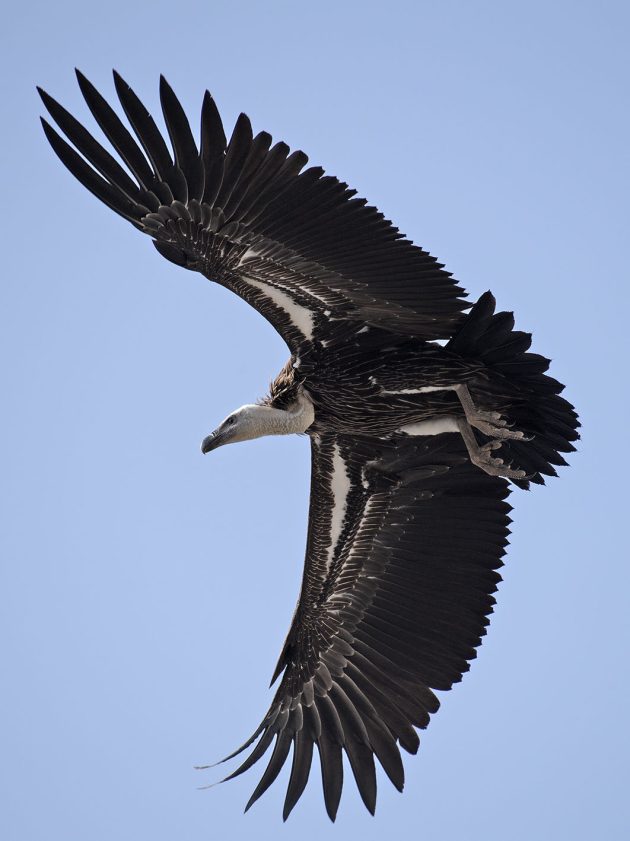
Seasonal migration counts average around 40 birds but have exceeded 60. In comparison, over 15 thousand Griffons make the same crossing each season.
A tired but curious Griffon Vulture rests on a sea cliff at Gibraltar, surrounded by Mediterranean wildflowers, including the endemic purple Gibraltar sea lavender
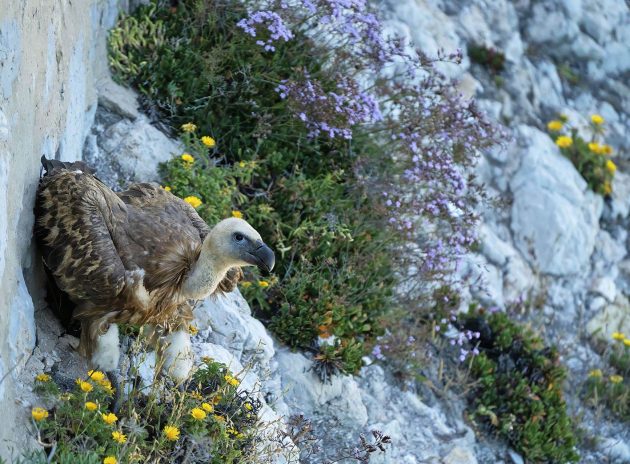
Global warming is often cited as the culprit for this new arrival but I think not. I think that these birds have associated with the Griffons in Africa but while the Griffon numbers were low, that was it. Now the chances of Ruppell’s getting caught up in Griffon flocks and straying north into Europe are much higher, simply because there are so many more Griffons making the journey.
Arrival. A Griffon Vulture reaches the shores of Gibraltar
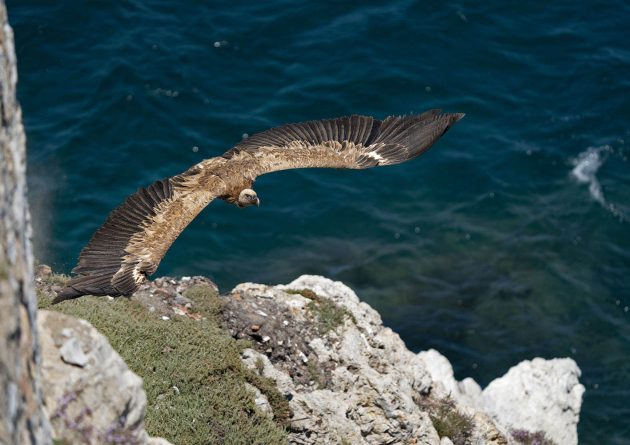
So, what of the Yellow-legged Gulls that alerted me to the arrival of the Griffon? That will be the next part of this story.
Sadly, not all make it. A Griffon Vulture is washed ashore in the Bay of Gibraltar
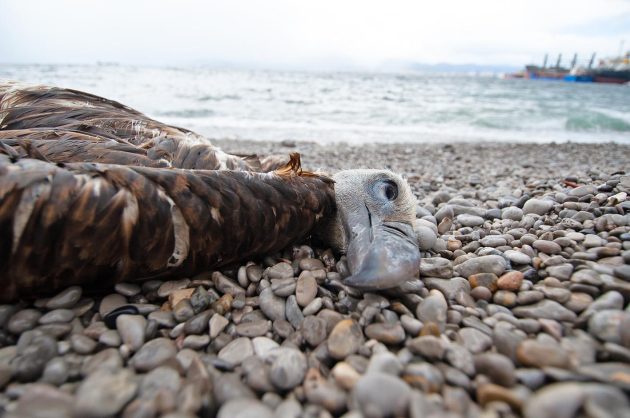
Cover Photo: A Griffon Vulture arrives at Gibraltar with undercarriage down as it heads for land













Clive introduced me to the delights of raptor watching at Gibraltar nearly 40 years ago. I was fascinated to read of the growth of Spain’s griffon-vulture population, and how the bigger flocks have carried with them Rüppell’s vultures back to Spain. Great photographs, too, especially the Rüppell’s. I saw one near Tarifa in 2022 but failed to get a photograph, so I much enjoyed this shot.
Clive also introduced me to raptors and other birds in the late 1970’s. They have been part of my life ever since and led to my career as a conservation biologist. I remember watching those grifffons passing through Gibraltar. Long may they do so.
Thanks David and Laurence. I’ll be posting more on vultures next. It’s great that we’re all “re-meeting” via this site. Hope to see you next month, David, and you soon after, Laurence!